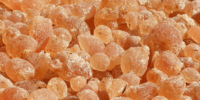Prebiotic Spotlight: Prebiotic Misconceptions
Each edition of GPA’s Prebiotic Spotlight focuses on a specific prebiotic type to raise awareness around the prebiotic itself, its sources, any notable and/or recent research, and how it is used in the marketplace. This edition takes a different turn, debunking the most common misconceptions about prebiotics and highlighting what the science truly shows.
Misconception #1: Prebiotics and probiotics are the same.
Reality:
Although both prebiotics and probiotics play key roles in supporting gut health and a balanced gut microbiome, the two are distinctly different substances. Prebiotics serve as substrates that promote the growth and activity of commensal bacteria in the gut, whereas probiotics are the beneficial live microorganisms that naturally reside in the gut microbiota, and can be consumed to confer health benefits. The Global Prebiotic Association (GPA) defines prebiotics as compounds or ingredients that are utilized by the microbiota, producing a health or performance benefit (Deehan et al., 2024). Meanwhile, the International Scientific Association for Probiotics and Prebiotics (ISAPP) defines probiotics as live microorganisms that confer health benefits when consumed at adequate amounts (Hill et al., 2014). Together, prebiotics and probiotics work synergistically to enhance digestion, strengthen immunity, promote a balanced gut microbiome, and support overall metabolic health, while remaining completely distinct substances.
Misconception #2: All fibers are prebiotics, and all prebiotics are fibers.
Reality:
Although many prebiotics are classified as dietary fibers, not all prebiotics are fibers, and not all fibers function as prebiotics. Dietary fiber is a broad term referring to carbohydrate polymers with three or more monomeric units that resist digestion and absorption in the human intestine (Carlsen & Pajari, 2023). However, only certain fibers possess the defining characteristics of a prebiotic: fermentable by the gut microbiota and confer a health benefit to the host. Examples of such prebiotic fibers include inulin, galactooligosaccharides (GOS), fructooligosaccharides (FOS), and resistant starch (RS). Other fibers, which lack the defining characteristics of a prebiotic, such as cellulose, psyllium, and methylcellulose, are non-fermentable and confer their benefits via mechanical effects such as improving bowel regularity (Holscher, 2017). Furthermore, some prebiotic types, such as polyphenols and human milk oligosaccharides (HMOs), which are not dietary fibers but are classified as prebiotics due to their ability to promote beneficial shifts in the microbiota and confer health benefits to the host (Carter et al., 2025; Plamada & Vodnar, 2021). As such, while the terms ‘fibers’ and ‘prebiotics’ often overlap, they are not synonymous.
Misconception #3: Prebiotics are beneficial for people with digestive issues only.
Reality:
Prebiotics provide health benefits that extend beyond digestive support. By nourishing the gut microbiota, prebiotics influence multiple systems in the body, including immune, metabolic, and cognitive (Gibson et al., 2017). In a systematic review of 40 randomized controlled trials, Arioz Tunc et al. (2025) found that prebiotics such as GOS, FOS, inulin, and beta-glucans enhanced immune activity, increasing markers like immunoglobulin A and natural killer cell activity. Similarly, a meta-analysis by Zandifar et al. (2025) involving 915 participants reported significant improvement in cognitive function and the levels of depression and anxiety across different assessment scales. Collectively, these findings highlight that prebiotics support overall health and are not limited to use in individuals with digestive issues.
Misconception #4: Prebiotics benefit only the gut.
Reality:
The beneficial effects of prebiotics begin in the gut, where they are fermented by gut microbes, but their influence extends far beyond the digestive system. Prebiotics have been shown to impact multiple organ systems and can support immune, cardiovascular, bone, and skin health. In addition to the gut, the human body hosts other microbial niches, including the skin, lungs, oral cavity, and urogenital tract. Recent studies indicate that both oral and topical prebiotic formulations can positively influence these microbiomes.
For example, patients with psoriasis who received a combination of topical anti-psoriasis therapy and oral prebiotic-probiotic supplementation demonstrated greater improvements in disease activity, including Psoriasis Area and Severity Index, Dermatology Life Quality Index, inflammatory markers, and skin thickness compared to those that received the anti-psoriasis topical therapy alone (Buhaș et al., 2023). Similarly, individuals with atopic dermatitis who underwent daily baths with a synbiotic mixture containing prebiotics and probiotics showed significant reductions in disease severity and progressive improvements in quality of life (Noll et al., 2021).
In the urogenital tract, topical application of maltose-containing gel has been shown to restore microbial balance and treat bacterial vaginosis, a dysbiotic condition associated with increased infection risk in women (France et al., 2022; Zhang et al., 2020). For bone health, supplementation with oligosaccharides (short-chain and long-chain inulin-type fructans) has been shown to enhance calcium absorption and bone mineralization in adolescents (Abrams et al., 2005). Furthermore, prebiotic supplementation has demonstrated beneficial effects on cardiovascular health, though outcomes vary depending on factors such as prebiotic type, dose, intervention duration, and baseline microbiota composition (Ghanbari et al., 2024). These
findings highlight that the physiological impact of prebiotics extend beyond the gut, influencing multiple other body systems.
Misconception #5: Prebiotics can cause digestive complaints.
Reality:
Prebiotics are generally well tolerated and cause little to no digestive discomfort when introduced gradually and consumed with adequate fluids. However, mild and temporary gastrointestinal symptoms, such as bloating, flatulence, cramps, and loose stools, may occur during the initial phase of consumption (Calame et al., 2008; Guarino et al., 2020; JanssenDuijghuijsen et al., 2024). These effects are typically due to the gut microbiota adapting to the fermentation of the consumed prebiotics and the osmotic activity prebiotics exert in the gut (Guarino et al., 2020; Yu et al., 2020). These symptoms typically subside within a few days to weeks of continued intake.
Misconception #6: Prebiotics can help with weight loss.
Reality:
Prebiotics alone are not a quick solution for weight loss, but they can play a supportive role in improving body composition and metabolic health. Research shows that prebiotic intake can positively influence body weight, body mass index, body fat percentage, and blood pressure (Hassan et al., 2024; Ko et al., 2025; Razmpoosh et al., 2025). However, these benefits are most effective when combined with healthy lifestyle habits such as balanced nutrition and regular physical activity to maintain the benefits in the long term.
The supportive effects of prebiotics may be mediated through the production of short-chain fatty acids generated during prebiotic fermentation in the gut, which help regulate appetite by stimulating the release of glucagon-like peptide-1 (GLP-1) and peptide YY (PYY), two hormones involved in promoting satiety and slowing gastric emptying (Hamilton & Bomhof, 2023; Holst, 2007; Ye et al., 2015). While these mechanisms suggest that prebiotics may support weight management, further research is needed to determine the most effective prebiotic types, doses, and durations of use for achieving sustained weight-related outcomes.
Misconception #7: All prebiotic types are the same.
Reality:
Not all prebiotics are alike, as each type can differ in source, chemical structure, efficacious dose, duration of use, and specific health effects produced. Prebiotic fibers from different sources also vary in composition; for example, bananas contain resistant starch, whereas apples contain pectin, each with distinct chemical structure (Holscher, 2017). Although all prebiotics share key characteristics like resistance to digestion, fermentation by gut microbiota, and the ability to provide a measurable and clinically meaningful health benefit, their effects on the body and microbiome can differ. Responses to prebiotics depend largely on the composition of
one’s gut microbiota, meaning that the same prebiotic may affect healthy and diseased individuals differently. With a vast number of microbials colonizing our guts, different prebiotics tend to have a selective and specific modulatory effect on which bacterial strains are affected, influencing their health outcomes. For this reason, it is often beneficial to incorporate a variety of prebiotic types from both food sources and dietary supplements in the diet, supporting a diverse and resilient microbiome and helping identify which prebiotics best align with individual health needs and goals.
References:
Abrams, S. A., Griffin, I. J., Hawthorne, K. M., Liang, L., Gunn, S. K., Darlington, G., & Ellis, K. J. (2005). A combination of prebiotic short- and long-chain inulin-type fructans enhances calcium absorption and bone mineralization in young adolescents. The American journal of clinical nutrition, 82(2), 471–476. https://doi.org/10.1093/ajcn.82.2.471.
Arioz Tunc, H., Calder, P. C., Cait, A., Dodd, G. F., Gasaly Retamal, N. Y. I., Guillemet, D., James, D., Korzeniowski, K. J., Lubkowska, A., Meynier, A., Ratajczak, W., Respondek, F., Thabuis, C., Vaughan, E. E., Venlet, N., Walton, G., Gasser, O., & de Vos, P. (2025). Impact of non-digestible carbohydrates and prebiotics on immunity, infections, inflammation and vaccine responses: a systematic review of evidence in healthy humans and a discussion of mechanistic proposals. Critical reviews in food science and nutrition, 1–74. Advance online publication. https://doi.org/10.1080/10408398.2025.2514700.
Buhaș, M. C., Candrea, R., Gavrilaș, L. I., Miere, D., Tătaru, A., Boca, A., & Cătinean, A. (2023). Transforming Psoriasis Care: Probiotics and Prebiotics as Novel Therapeutic Approaches. International journal of molecular sciences, 24(13), 11225. https://doi.org/10.3390/ijms241311225.
Calame, W., Weseler, A. R., Viebke, C., Flynn, C., & Siemensma, A. D. (2008). Gum arabic establishes prebiotic functionality in healthy human volunteers in a dose-dependent manner. The British journal of nutrition, 100(6), 1269–1275. https://doi.org/10.1017/S0007114508981447.
Carter, M. M., Demis, D., Perelman, D., St Onge, M., Petlura, C., Cunanan, K., Mathi, K., Maecker, H. T., Chow, J. M., Robinson, J. L., Sabag-Daigle, A., Sonnenburg, E. D., Buck, R. H., Gardner, C. D., & Sonnenburg, J. L. (2025). A human milk oligosaccharide alters the microbiome, circulating hormones, and metabolites in a randomized controlled trial of older adults. Cell reports. Medicine, 6(8), 102256. https://doi.org/10.1016/j.xcrm.2025.102256.
Carlsen, H., & Pajari, A. M. (2023). Dietary fiber – a scoping review for Nordic Nutrition Recommendations 2023. Food & nutrition research, 67, 10.29219/fnr.v67.9979. https://doi.org/10.29219/fnr.v67.9979.
Deehan, E. C., Al Antwan, S., Witwer, R. S., Guerra, P., John, T., & Monheit, L. (2024). Revisiting the Concepts of Prebiotic and Prebiotic Effect in Light of Scientific and Regulatory Progress-A Consensus Paper from the Global Prebiotic Association. Advances in nutrition (Bethesda, Md.), 15(12), 100329. https://doi.org/10.1016/j.advnut.2024.100329.
France, M., Alizadeh, M., Brown, S., Ma, B., & Ravel, J. (2022). Towards a deeper understanding of the vaginal microbiota. Nature microbiology, 7(3), 367–378. https://doi.org/10.1038/s41564-022-01083-2.
Ghanbari, F., Hasani, S., Aghili, Z. S., & Asgary, S. (2024). The potential preventive effect of probiotics, prebiotics, and synbiotics on cardiovascular risk factors through modulation of gut microbiota: A review. Food science & nutrition, 12(7), 4569–4580. https://doi.org/10.1002/fsn3.4142.
Gibson, G. R., Hutkins, R., Sanders, M. E., Prescott, S. L., Reimer, R. A., Salminen, S. J., Scott, K., Stanton, C., Swanson, K. S., Cani, P. D., Verbeke, K., & Reid, G. (2017). Expert consensus document: The International Scientific Association for Probiotics and Prebiotics (ISAPP) consensus statement on the definition and scope of prebiotics. Nature reviews. Gastroenterology & hepatology, 14(8), 491–502. https://doi.org/10.1038/nrgastro.2017.75.
Guarino, M. P. L., Altomare, A., Emerenziani, S., Di Rosa, C., Ribolsi, M., Balestrieri, P., Iovino, P., Rocchi, G., & Cicala, M. (2020). Mechanisms of Action of Prebiotics and Their Effects on Gastro-Intestinal Disorders in Adults. Nutrients, 12(4), 1037. https://doi.org/10.3390/nu12041037.
Hamilton, C. C., & Bomhof, M. R. (2023). Oligofructose-Enriched Inulin Consumption Acutely Modifies Markers of Postexercise Appetite. Nutrients, 15(24), 5017. https://doi.org/10.3390/nu15245017.
Hassan, N.E., El-Masry, S.A., El Shebini, S.M., Ahmed, N.H., Mehanna, N.S., Wahed, M.M., Amine, D., Hashish, A., Selim, M., Afify, M.A., & Alian, K. (2024). Effect of weight loss program using prebiotics and probiotics on body composition, physique, and metabolic products: longitudinal, intervention study. Scientific Reports, 14, 10960. https://doi.org/10.1038/s41598-024-61130-2.
Hill, C., Guarner, F., Reid, G., Gibson, G. R., Merenstein, D. J., Pot, B., Morelli, L., Canani, R. B., Flint, H. J., Salminen, S., Calder, P. C., & Sanders, M. E. (2014). Expert consensus document. The International Scientific Association for Probiotics and Prebiotics consensus statement on the scope and appropriate use of the term probiotic. Nature reviews. Gastroenterology & hepatology, 11(8), 506–514. https://doi.org/10.1038/nrgastro.2014.66.
Holscher H. D. (2017). Dietary fiber and prebiotics and the gastrointestinal microbiota. Gut microbes, 8(2), 172–184. https://doi.org/10.1080/19490976.2017.1290756.
Holst J. J. (2007). The physiology of glucagon-like peptide 1. Physiological reviews, 87(4), 1409–1439. https://doi.org/10.1152/physrev.00034.2006.
JanssenDuijghuijsen, L., van den Belt, M., Rijnaarts, I., Vos, P., Guillemet, D., Witteman, B., & de Wit, N. (2024). Acacia fiber or probiotic supplements to relieve gastrointestinal complaints in patients with constipation-predominant IBS: a 4-week randomized double-blinded placebo-controlled intervention trial. European journal of nutrition, 63(5), 1983–1994. https://doi.org/10.1007/s00394-024-03398-8.
Ko, J., Yoo, C., Xing, D., Chun, J., Gonzalez, D.E., Dickerson, B.L., Leonard, M., Jenkins, V., van der Merwe, M., Slupsky, C.M., Sowinski, R., Rasmussen, C.J., & Kreider, R.B. (2024). Effects of human milk oligosaccharide 2’-Fucosyllactose ingestion on weight loss and markers of health. Nutrients, 16(19), 3387. https://doi.org/10.3390/nu16193387.
Noll, M., Jäger, M., Lux, L., Buettner, C., & Axt-Gadermann, M. (2021). Improvement of Atopic Dermatitis by Synbiotic Baths. Microorganisms, 9(3), 527. https://doi.org/10.3390/microorganisms9030527.
Plamada, D., & Vodnar, D. C. (2021). Polyphenols-Gut Microbiota Interrelationship: A Transition to a New Generation of Prebiotics. Nutrients, 14(1), 137. https://doi.org/10.3390/nu14010137.
Razmpoosh, E., Sivanandy, M. S., & Ehrlich, A. M. (2025). The Effect of Prebiotics, Alone or as Part of Synbiotics, on Cardiometabolic Parameters in Women with Polycystic Ovary Syndrome: A Systematic Review and Meta-Analysis of Randomized Controlled Trials. Biomedicines, 13(1), 177. https://doi.org/10.3390/biomedicines13010177.
Ye, Z., Arumugam, V., Haugabrooks, E., Williamson, P., & Hendrich, S. (2015). Soluble dietary fiber (Fibersol-2) decreased hunger and increased satiety hormones in humans when ingested with a meal. Nutrition research (New York, N.Y.), 35(5), 393–400. https://doi.org/10.1016/j.nutres.2015.03.004.
Yu, X., Gurry, T., Nguyen, L. T. T., Richardson, H. S., & Alm, E. J. (2020). Prebiotics and Community Composition Influence Gas Production of the Human Gut Microbiota. mBio, 11(5), e00217-20. https://doi.org/10.1128/mBio.00217-20.
Zandifar, A., Badrfam, R., Mohammaditabar, M., Kargar, B., Goodarzi, S., Hajialigol, A., Ketabforoush, S., Heidari, A., Fathi, H., Shafiee, A., & Pourjafar, H. (2025). The Effect of Prebiotics and Probiotics on Levels of Depression, Anxiety, and Cognitive Function: A Meta-Analysis of Randomized Clinical Trials. Brain and behavior, 15(3), e70401. https://doi.org/10.1002/brb3.70401.
Zhang, Q. Q., Liu, Z. H., Liu, L. L., Hu, G., Lei, G. L., Wang, Y., Cao, Y., Wu, W., Zhang, L., & Liao, Q. P. (2020). Prebiotic Maltose Gel Can Promote the Vaginal Microbiota From BV-Relate




